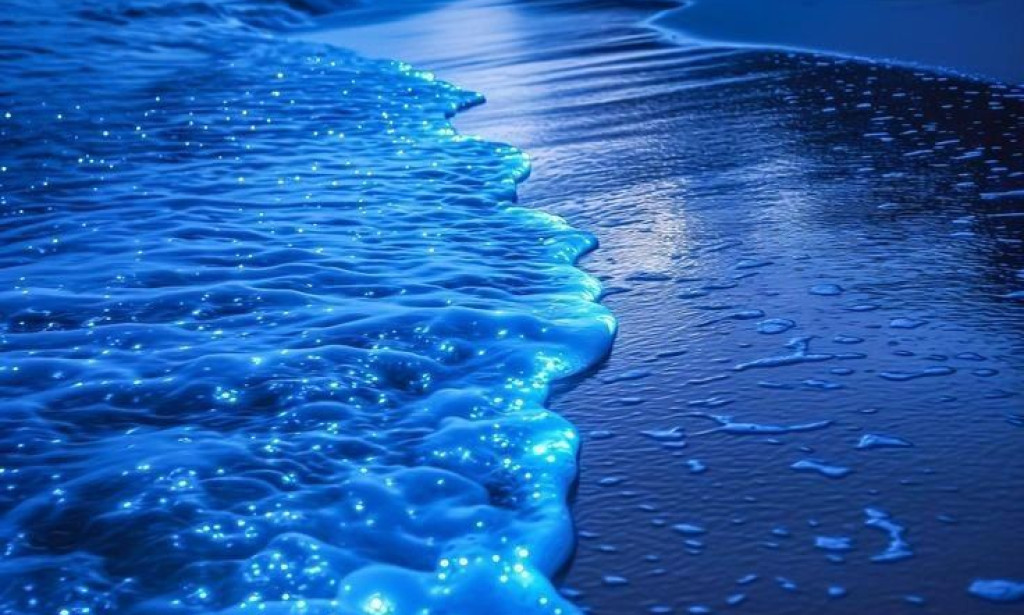Discovering the Magic of Bioluminescent Bays
Introduction
In the realm of natural wonders, bioluminescent bays stand out as some of the most enchanting and surreal experiences on Earth. These glowing water bodies, primarily found in tropical and subtropical regions, illuminate the night with a mesmerizing blue light, creating a spectacle that captivates visitors and locals alike. Among the most renowned bioluminescent bays are Mosquito Bay in Vieques, Puerto Rico, and Laguna Grande in Fajardo, Puerto Rico. This article delves into the science, beauty, and conservation of these luminous bays.
The Science Behind the Glow
The phenomenon of bioluminescence is attributed to microorganisms known as dinoflagellates. When these tiny, single-celled organisms are disturbed—by movement in the water, such as waves, swimming, or even splashing—they emit light as a defense mechanism. The chemical reaction involves luciferin, a light-emitting compound, and luciferase, an enzyme that catalyzes the reaction, resulting in the glowing effect.While bioluminescence can be found in various organisms, including fireflies and certain fungi, the concentration of dinoflagellates in these bays creates a breathtaking display. They thrive in warm, shallow waters rich in nutrients, often resulting from a combination of freshwater and saltwater influx, making these bays perfect habitats.
Mosquito Bay: A Shimmering Paradise
Located on the small island of Vieques, Mosquito Bay is renowned for being one of the brightest bioluminescent bays in the world. Recognized by the Guinness Book of World Records, the bay glows with an intensity that can reach up to 30 times brighter than other bioluminescent locations.Visitors can explore the bay through guided kayak tours, allowing them to paddle through the luminescent waters and experience the magic up close. As kayakers glide through the bay, every stroke of the paddle creates a cascade of shimmering light, reminiscent of stars falling into the water. The best time to visit is during the dark, moonless nights when the glow is most vivid.
Laguna Grande: A Hidden Gem
Laguna Grande, located in Fajardo, is another stunning bioluminescent bay that offers an unforgettable experience. Surrounded by lush mangroves and rich wildlife, this bay provides a more tranquil atmosphere compared to Mosquito Bay.Adventure-seekers can embark on a night tour, where they can kayak or take a boat ride through the glowing waters. The journey through the mangroves, illuminated by the bioluminescence, feels like entering a dreamlike world. The vibrant ecosystem surrounding Laguna Grande is also home to various species of fish, birds, and other wildlife, making it a vital area for ecological study and conservation.
Conservation and Preservation
Despite their beauty, bioluminescent bays face threats from pollution, development, and climate change. Increased runoff from urban areas can introduce harmful substances that disrupt the delicate balance of the ecosystems. Additionally, the impact of tourism must be managed to ensure that these natural wonders remain pristine for future generations.Local organizations and governments are working diligently to promote sustainable tourism practices, educate visitors on the importance of conservation, and implement measures to protect these unique environments. Efforts include limiting the number of visitors, regulating boating activities, and raising awareness about the ecological significance of bioluminescent bays.
Conclusion
Bioluminescent bays are not just natural spectacles; they are vital ecosystems that showcase the beauty and fragility of our planet. Whether you find yourself gliding through the glowing waters of Mosquito Bay or exploring the serene Laguna Grande, the experience is sure to leave an indelible mark on your memory. As we continue to marvel at these wonders, it is essential to recognize our responsibility in preserving them, ensuring that future generations can also bask in the enchanting glow of these magical places.

Tamu
thank you
You must be logged in to post a comment.